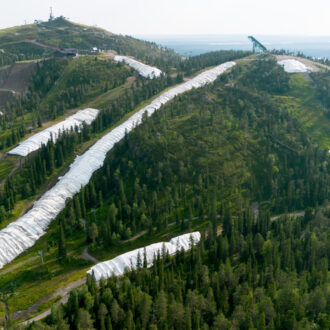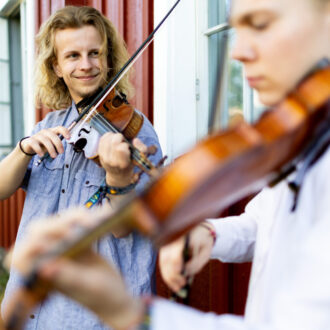The arrival of the cold, dark, snowy winter doesn’t mean life stops. On the contrary, discover how Finns not only survive it, but enjoy it!
Finland is one of the northernmost areas in the world with a permanent population. Winter in Finland varies in duration from about three to seven months, depending on the part of the country, but regardless of location, it’s cold, dark and snowy. But those features don’t disrupt life. Finns will get to work or school in the morning no matter how cold it is or how much snow has fallen.
They know how to make the most of the winter months. The following Winter Top 8 will give you a glimpse of what keeps Finns going during the coldest months of the year.
Coffee
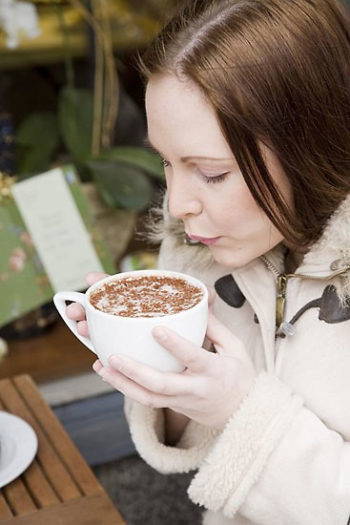
A cinnamon-sprinkled cappuccino chases the winter chill away.Photo: Rodeo.fi/Juha Tuomi
Coffee gets you moving on cold, dark winter mornings. It provides strength to last the day, and some people even say it helps them get to sleep, believe it or not. Statistics show that coffee consumption per capita in Finland was 11.92 kilograms (in 2009), approximately 3.8 cups of coffee a day (compare to 4.09 kilograms per person in the USA, or 7.35 kilograms in Sweden). The brew that most Finns drink is light-roasted and slightly bitterer than that coffee on the Continent.
Serving coffee is an important Finnish custom. Most family celebrations, special occasions at the workplace, receptions for sports personalities and visits by friends include a table set with beautiful coffee cups and pastries. But Finns drink coffee anywhere and everywhere – any excuse will do to get their hands on that coffee cup. A fairly recent addition to the urban scene are American-style coffee chains that have quickly attracted a broad clientele.
Other hot drinks, tea, cocoa, hot blackcurrant juice and ‘glögi’, a Nordic version of mulled wine, are also popular with Finns in the winter.
Sauna

Nothing makes you feel more alive or refreshed than a dip in icy waters after roasting in the sauna!© Finnish Tourist Board
Sauna (or the sauna) is an icon of Finnishness, and no wonder. There are at least two million saunas in this country of approximately 5.4 million people and 2.6 million residential properties. The number is rising as most new apartments have an electric sauna adjacent to the bathroom.
Finns have a sauna to round off an evening, after sports, after sweaty work, in the name of friendship and togetherness, to mark the end of negotiations or just because it’s sauna day, if nothing else. The sauna is a natural part of big days such as Christmas and Midsummer. Contrary to foreign belief, people don’t compete about who can stand the heat of the sauna best, or who can stay in the hot room the longest. They consider a temperature of approximately 80 degrees Celsius to be sensible.
In winter, the sauna is a great place for warming up frozen fingers and toes. It is a place for relaxation, tranquillity and deep thought. The sauna experience includes escape from the tensions of everyday life to another reality, towards calm and contentment. Some say that having a dip in a hole in the ice of a lake or the sea is one of the joys of a waterside sauna in winter. It will certainly improve your circulation, and at the very least, make you feel refreshingly alive!
Warm housing
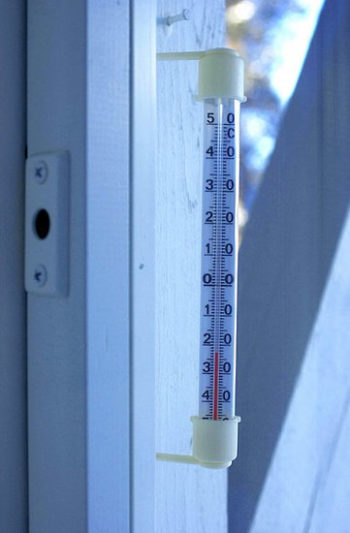
Triple-glazed windows ensure that temperatures inside remain warm even when temperatures outside plummet.Photo: Rodeo.fi/Tuomas Marttila
A warm house makes all the difference when it is -20 degrees outside. The development of building technology that saves energy and makes use of renewable natural resources has been emphasised in Finland. Building regulations state that windows in new buildings must be triple-glazed, and the latest technology enables window panes to function as solar panels. Draught-proofing and a layer of insulation material at least ten centimetres thick are incorporated into the external walls of houses.
Various heating options are available, but district heating is an effective, economical and environmentally friendly way to heat a large number of properties. It saves about 30 percent of energy compared with separate production of heat and electricity. This form of heating is produced in power stations which cogenerate heat and electricity. This heat is transferred to water, which then circulates through a network of pipes to radiators in homes before returning to the power station for reheating and recycling.
Driving in winter
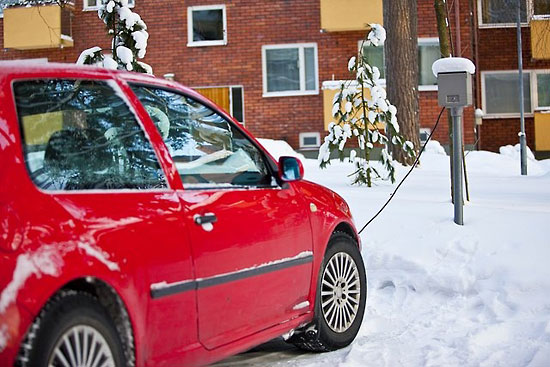
Engine-block heaters help cars start smoothly and quickly even in the worst winter chill.Photo: Rodeo.fi/Tero Sivula
Finns drive in winter almost as much as they do in summer, but special accessories are required when driving in low temperatures and on icy roads.
All Finnish car owners are required by law to equip their cars with winter tyres, which can either be all-weather tyres, or studded tyres. Drivers have to be on the alert as soon as the weather turns wintry. Visibility deteriorates, roads are slippery, braking distances are longer and driving in deep snow gives drivers less control over their vehicle.
An engine-block electric heater makes cars easier to start and reduces fuel consumption, and is a great boon for winter drivers who do not have a garage and leave their cars outside overnight. It is a common sight to see drivers plugging their cars into electric sockets in the parking areas outside their homes when they come home from work. Built-in seat heaters are standard in cars manufactured for the Nordic countries and are a feature that drivers in these latitudes really appreciate.
Snow: How to get rid of it
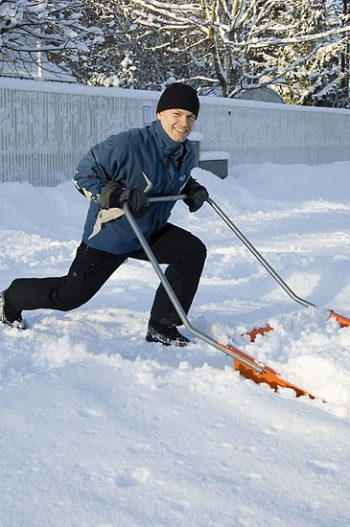
It’s heavier than it looks, but he’s still smiling!Photo: Rodeo.fi/Juha Tuomi
The northern parts of Finland are, on average, covered with snow as early as the end of October, while the southern parts are covered starting sometime between December and January. The snow usually doesn’t melt until well into March in the south, and in the northernmost parts of Lapland it can still be lying around in June. Finland knows how to cope with snowstorms and low temperatures.
Road maintenance is regulated by law in Finland. Individual landowners and local authorities share responsibility for the upkeep of roads. Local authorities make sure that snowploughs are at the ready when roads need to be cleared and when salt and grit spreaders have to be called out to tackle slippery roads.
Rural Finland is sparsely populated and there are long stretches of road maintained by private individuals who own the adjoining land, or by cooperatives that are responsible for sections of the road. Reflector poles serve as markers that indicate to snowplough drivers and other road users where the edge of the road is even in the heaviest of snowstorms.
Snow: How to enjoy it
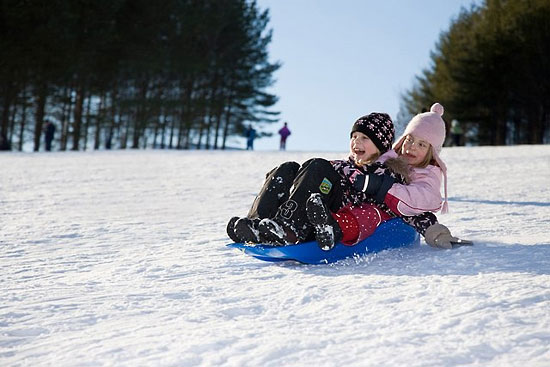
Sledding is a matter of attitude, just like winter! You’d best sit back and enjoy the ride!Photo: Rodeo.fi/Juha Tuomi
What a fantastic feeling to wake up one morning in the late autumn and look out of the window to see that the first snow has fallen! Children waste no time rushing outside to make their first snowmen and find the nearest sledging hill, while adults dig out their winter sports equipment.
Cross-country skiing is a national pastime and nearly all municipalities maintain ski tracks that are lit at night. The yearly Finlandia skiing marathon attracts more than 5,000 participants for its 60-kilometre course. Also, schools close for a one-week ski holiday in February or March and many parents take time off then so that families can enjoy outdoor winter pursuits together.
Other key sports are the various branches of alpine skiing, snowboarding and freestyle skiing. The latter are relatively new sports but they have rapidly become big favourites among the young and daring. Ice skating is another national pastime, like cross-country skiing. Local authorities maintain outdoor skating rinks on school sports fields and other suitably large, flat areas. Indoor ice rinks all over the country serve individual skaters and clubs, but also hockey teams – ice hockey is the biggest spectator sport.
Proper attire

Messing around in the snow is no problem in coveralls!Photo: Rodeo.fi/Mika Heittola
The secret to spending time outdoors in the winter is to make sure you are dressed properly. First of all, you must have a comfortable under-layer that draws perspiration away from the skin. Materials that transfer moisture to the outer layers of clothing but keep the warmth in and the skin dry are available in sports shops and department stores. Put another layer of warm clothing on top of this: fleece, cotton or wool is good material for this. The third or outer layer should be a garment that is windproof and waterproof but breathable, and, depending on the degree of cold, padded or quilted.
Special attention must be paid to protecting the feet, hands and head from the cold. First put on socks which draw moisture away from the skin and do not chafe, then some wool socks and finally comfortable, properly insulated winter footwear with non-slip soles. Nothing will ruin the fun of outdoor activities faster than frozen feet. Gloves should be roomy with a warm lining. Headgear should protect the ears properly, and in very cold weather a silk balaclava is excellent for protecting the face.
Remember the Finnish saying: “There’s no such thing as bad weather, only bad clothing.”
Joys of winter evenings
Contrary to what foreigners may imagine about dark winter evenings, there is an array of activity options when the work day is over. For avid learners, the extensive library network supports the national reading habit. There are also 250 publicly owned community colleges and adult education centres across the country that offer all kinds of courses at a reasonable price: languages, handicraft, social studies, art, sports – anything that is popular or relevant and interests people. These voluntary educational centres have long traditions and attract approximately 800,000 participants every year.
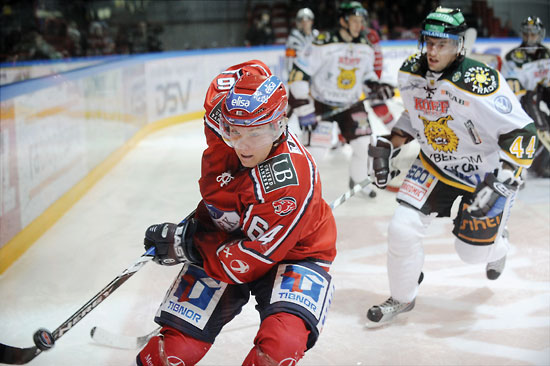
Winter’s most popular spectator sport is full of action and close calls.Photo: Antti Aimo-Koivisto/Lehtikuva
Finns join associations that improve the quality of life in their home district and in the world in numerous ways: through sporting activities, learning about other cultures, dealing with local issues, carrying out international development projects, bringing the interests of children, the elderly and the disabled to the fore and, most importantly, mixing with like-minded people. There are about 123,000 registered associations and statistically every Finn is a member of more than one of them.
Cultural pursuits and sports have a big following. Every self-respecting town has a theatre and a significant number also have their own orchestra, and waiting lists for the most popular performances are often months long. The menu of indoor sports is long and varied, but ice hockey attracts the biggest crowds on winter evenings. So whether it is staying home with a good book, learning Portuguese or supporting their favourite hockey team, Finns have plenty of ways to enjoy the winter season.
By Salla Korpela

